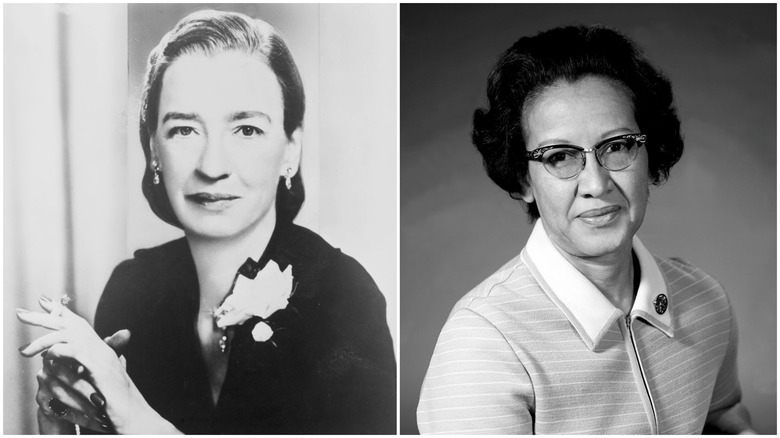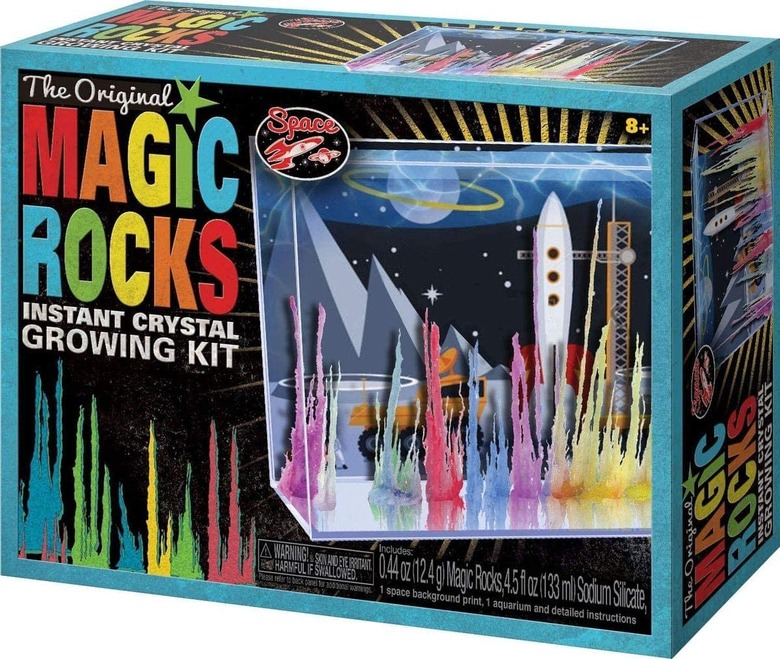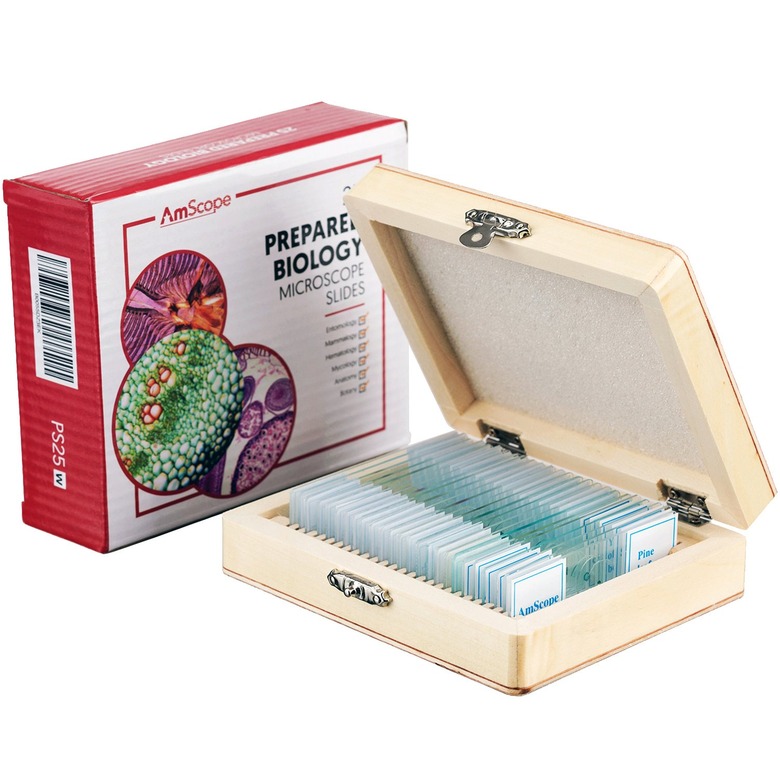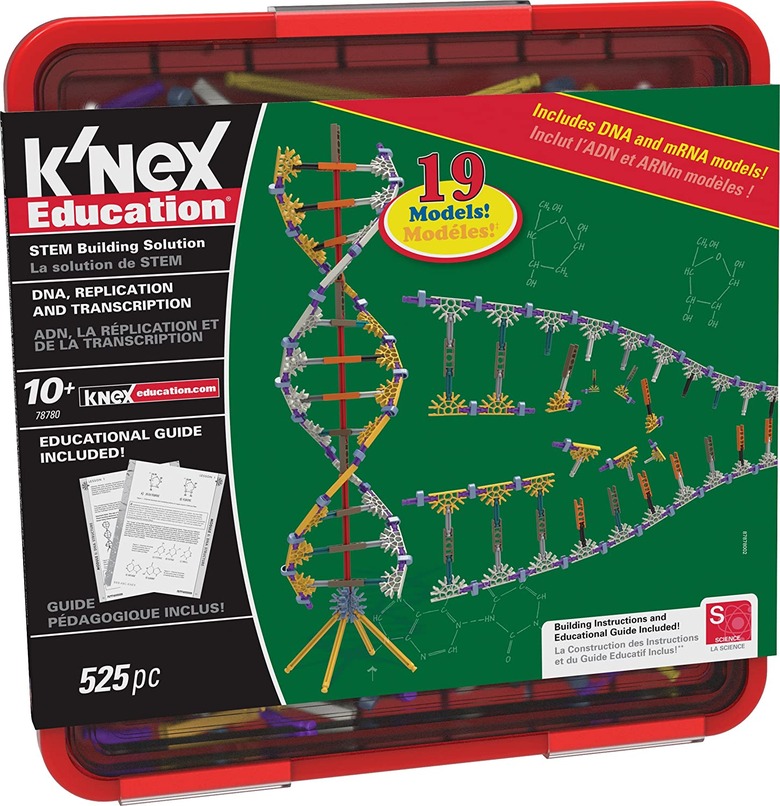Need Inspiration? Check Out These 5 Women-Led Advancements In Science
We may receive a commission on purchases made from links.
Sciencing may earn compensation through affiliate links in this article.
The history of science probably isn't something your teacher spends a ton of time on (and if they do, it's probably not on the test). But when you think about it, early scientists were truly amazing, making groundbreaking findings that formed the basis for every scientist's work today – all without today's technology.
Celebrating women's contributions to science is especially important, especially since women and girls are still underrepresented in STEM fields. But the truth is, women scientists have been behind some of the biggest advances in history.
So this women's history month, catch up on the work of some of the most important women in science. And, better yet, get inspired – these science kits will help you explore pay tribute to their amazing work.
The Woman: Katherine Johnson
The Woman: Katherine Johnson
The Discovery: Helping put the first American in space
You may have heard of Katherine Johnson, even if you don't know it. She was one of a group of brilliant Black mathematicians that were part of the team behind the first manned space travel, and was portrayed by Taraji P. Henson in the 2016 film _US&ref=as_li_ss_tl'>Hidden Figures_.
Haven't seen the movie? No prob. The math team at NASA involved using uber-complicated calculations about the trajectory the shuttle was supposed to take to ensure a safe trip. See, they'd never launched a manned shuttle into space before, so they had to take into account the safety risks.
And the computers were unreliable at the time. So Katherine would double check the calculations by hand – complications so complex they had a whole network of computers to deal with them. No wonder they called her the "human calculator."
You might not be a math genius yet, but experimenting with this US&ref=as_li_ss_tl'>Math Magic Science Kit can help you get there. Use it to try out 15 math tricks and games, and develop your skills at using math to solve problems.
The Woman: Dorothy Crowfoot Hodgkin
The Woman: Dorothy Crowfoot Hodgkin
The Discovery: Finding the structures of biochemical compounds
Like many young scientists, Dorothy Crowfoot Hodgkin grew up obsessed with crystals and chemistry. And that's a good thing for us, because she won a Nobel prize for her work using a technique called X-ray crystallography to figure out the structure of biological compounds
Specifically, she used this technique to figure out the structure of penicillin, which gave scientists amazing insight into exactly how it works. And she also discovered the structure of other compounds, like vitamin B-12, that were too complex to image in the past. Her work also advanced X-ray crystallography in general, making it easier for other scientists to study other compounds' structures.
You can't do X-ray crystallography at home, but you can learn the basics of crystal formation. Try out this US&ref=as_li_ss_tl'>crystal growing kit to a variety of crystals at home.
The Woman: Henrietta Lacks
The Woman: Henrietta Lacks
The Discovery: Providing some of the most important cells in health research
Henrietta Lacks was not a scientist – she was a Black woman who developed cervical cancer – but her impact on health science cannot be overstated. That's because Henrietta's tumor samples were used to culture HeLa cells, a cell line that health researchers use widely today. Virtually any genetic or cancer discovery involves HeLa cells in some way – yes, they're really that important.
Henrietta's contributions to science are immeasurable, but her story is also a reminder about the importance of ethical research. The scientists that took her cells never asked permission. They also invaded her privacy, publishing her name, medical records and even her genome after she died, all without her family's consent.
Pay tribute to Henrietta's legacy by US&ref=as_li_ss_tl'>reading about her life. Nurture your interest in cell biology by examining US&ref=as_li_ss_tl'>plant and animal cells and tissues on slides, and remember Henrietta as a reminder that unethical practices in science have real consequences.
The Woman: Rosalind Franklin
The Woman: Rosalind Franklin
The discovery: Helping uncover the structure of DNA
Another win for women using X-rays! Rosalind Franklin used a technique called X-ray diffraction to study DNA – something scientists at the time knew relatively little about. To do it, she took a series of images of DNA that gave some insight into its structure. In fact, she came very close to solving the structure of DNA herself – but Watson and Crick got a feature story in Nature first.
So how can you pay tribute to her at home? Making your own DNA structure, of course! This US&ref=as_li_ss_tl'>science kit has everything you need to create a DNA strand model at home. You can also use it to model DNA behavior, from replication – making another copy of the DNA strand – to transcription, or turning the DNA into RNA.
The Woman: Grace Hopper
The Woman: Grace Hopper
The discovery: Developing the first computer language compiler, A-O
Grace Hopper lived an exciting life. After earning a PhD in mathematics and mathematical physics in 1934, she joined the war effort in World War II, before returning home to resume her research.
She was a trailblazer in computer programming, and was part of a team that developed A-0, a program that translated mathematical codes into the binary code still used today. She was also an early pioneer of COBOL, the first standardized programming language.
Celebrate Grace's accomplishments by exploring computer science. Try using this science kit to US&ref=as_li_ss_tl'>build your own computer, and learn the coding skills you need to make games, stories and more.
References
- University of Houston: Dorothy Crowfoot Hodgkin
- San Diego Supercomputer Center: Rosalind Franklin
- Nature: Henrietta Lacks: science must right a historical wrong
- Johns Hopkins Medicine: The Legacy of Henrietta Lacks
- Yale: Grace Murray Hopper (1906-1992): A legacy of innovation and service
- NASA: Katherine Johnson Biography
Cite This Article
MLA
Tremblay, Sylvie. "Need Inspiration? Check Out These 5 Women-Led Advancements In Science" sciencing.com, https://www.sciencing.com/women-led-advancements-in-science-13763613/. 25 March 2021.
APA
Tremblay, Sylvie. (2021, March 25). Need Inspiration? Check Out These 5 Women-Led Advancements In Science. sciencing.com. Retrieved from https://www.sciencing.com/women-led-advancements-in-science-13763613/
Chicago
Tremblay, Sylvie. Need Inspiration? Check Out These 5 Women-Led Advancements In Science last modified August 30, 2022. https://www.sciencing.com/women-led-advancements-in-science-13763613/





